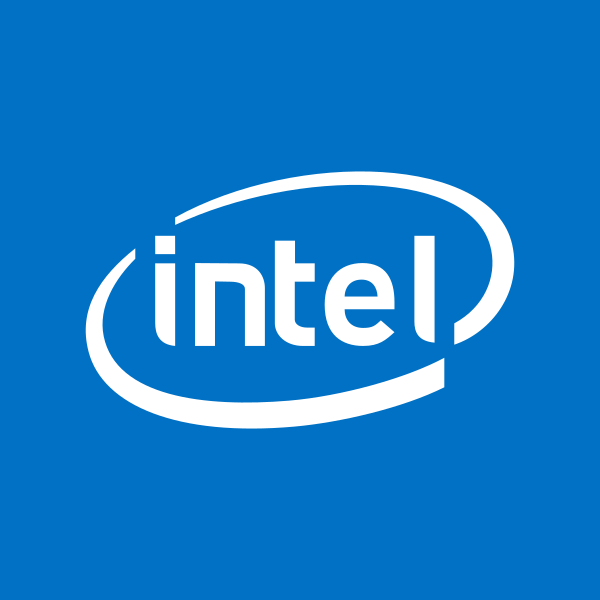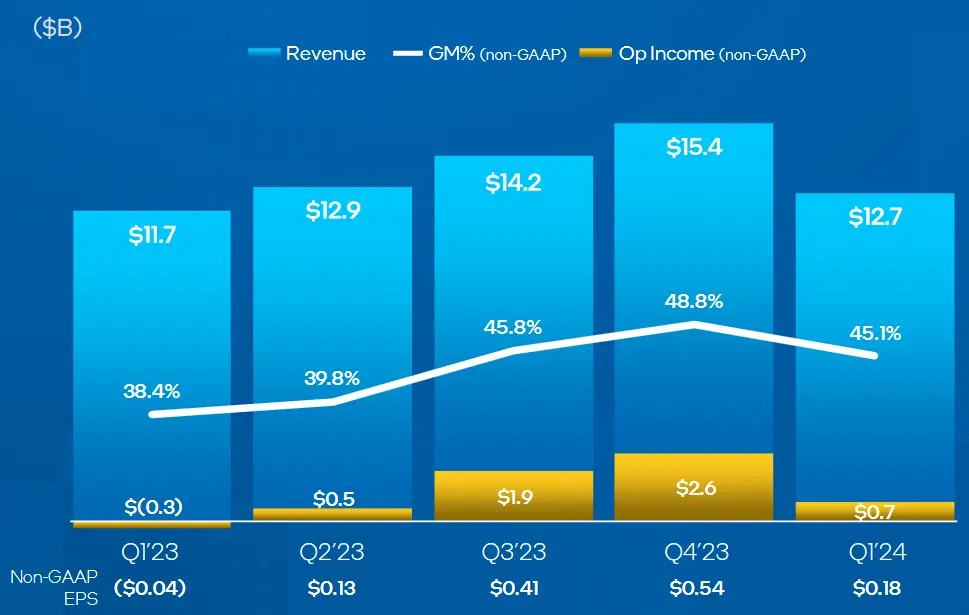Intel Corporation, founded in 1968, is a prominent technology company specializing in semiconductor chip manufacturing. Based in Santa Clara, California, Intel has been a key player in the computer industry for decades.
Key Company Facts
Founded: July 18, 1968
Founders: Gordon Moore, Robert Noyce
Primary Focus: Semiconductor chip manufacturing
Product Portfolio:
Central Processing Units (CPUs)
Chipsets
Integrated Graphics Processing Units (iGPUs)
Network Interface Controllers
Flash Memory
Field-Programmable Gate Arrays (FPGAs)
Historical Milestones:
1971: Developed world’s first commercial microprocessor
1990s: Partnership with Microsoft (“Wintel”) shaped PC industry
2000s: Faced increasing competition from AMD
2020s: Focus on AI, autonomous driving, and advanced manufacturing

Market Situation
Intel operates in the highly competitive semiconductor industry, crucial for technological advancements across various sectors.
Industry Characteristics:
- Rapid technological advancements
- High research and development costs
- Cyclical demand patterns
- Global supply chain dependencies
Market Position (as of 2023):
- x86 market share: 68.4%
- Global semiconductor market ranking: Fluctuating between 1st and 2nd
Key Competitors:
- Advanced Micro Devices (AMD)
- NVIDIA
- Qualcomm
- TSMC
- Samsung Electronics
| Competitor | Strength | Weakness |
|---|---|---|
| AMD | Strong in desktop CPUs | Smaller market share |
| NVIDIA | Dominates GPU market | Limited CPU presence |
| Qualcomm | Leader in mobile chips | Less presence in PC market |
| TSMC | Advanced manufacturing | Not a direct chip designer |
| Samsung | Diverse tech portfolio | Less focused on CPUs |
Influencing Factors
Internal Factors:
Research and Development (R&D) Investments
Annual R&D spending: $15.19 billion (2020)
Focus areas: AI, 5G, quantum computing
Manufacturing Capabilities
Intel 3 process node in production
Plans for Intel 20A and 18A nodes
Strategic Acquisitions
Notable acquisition: Mobileye (autonomous driving)
Value: $15.3 billion (2017)
Product Diversification
Expansion into discrete GPUs (Intel Arc)
Development of AI accelerators (Gaudi)
External Factors:
Global Chip Shortage
Impact: Increased demand, supply constraints
Duration: Expected to last through 2024
Geopolitical Tensions
US-China trade relations
Impact on global supply chains
Technological Advancements
Shift to ARM-based architectures
Quantum computing developments
Economic Conditions
Inflation rates
Consumer spending patterns
Analyst Opinions

Michael Johnson, Tech Industry Analyst at Global Insights:
“Intel’s strategic shift towards AI and advanced manufacturing processes positions them well for future growth. The company’s vast resources and established market presence provide a solid foundation for innovation.”
Rating: Buy
Price Target: $45
Key Points:
- Strong potential in AI market
- Improving manufacturing capabilities
- Undervalued at current price levels
Sarah Williams, Senior Analyst at MarketWatch:
“While Intel faces significant challenges from competitors, their recent investments in foundry services and next-generation technologies show promise. However, execution risks remain.”
Rating: Hold
Price Target: $38
Key Points:
- Competitive pressures from AMD and NVIDIA
- Potential in foundry services
- Execution risks in new technology rollouts
David Chen, Semiconductor Specialist at TechTrends:
“Intel’s turnaround strategy under CEO Pat Gelsinger is ambitious but faces significant hurdles. The success of their IDM 2.0 strategy is crucial for long-term competitiveness.”
Rating: Neutral
Price Target: $40
Key Points:
- IDM 2.0 strategy implementation critical
- Potential in AI and edge computing
- Market share pressures in core CPU business
Prospects and Risks
Growth Factors:
AI and Data Center Expansion
Projected AI chip market size: $300 billion by 2026
Intel’s AI PC shipments: 5 million units (2023)
Foundry Services (Intel Foundry Services)
Potential to capture market share from TSMC and Samsung
US CHIPS Act support: $52 billion in subsidies
Edge Computing and IoT
Projected IoT market size: $1.6 trillion by 2025
Intel’s IoT Group revenue: $4 billion (2020)
Autonomous Driving (Mobileye)
Projected autonomous vehicle market: $556.67 billion by 2026
Mobileye revenue growth: 41% YoY (Q4 2023)
Risks:
Intense Competition
AMD’s market share gains in desktop and server CPUs
NVIDIA’s dominance in AI and GPU markets
Manufacturing Delays
Historical issues with 10nm and 7nm processes
Potential impact on product competitiveness
Technological Shifts
Rise of ARM-based architectures in PCs and servers
Quantum computing advancements
Geopolitical and Economic Uncertainties
Global chip shortage impact
US-China trade tensions
How to Buy Intel Shares
1. Choose a Brokerage
Options: Interactive Brokers, Charles Schwab, Fidelity
Factors to consider: Fees, research tools, user interface
2. Open an Account
Required information: Personal details, financial information
Verification process: Identity and address confirmation
3. Fund Your Account
Methods: Bank transfer, wire transfer, check deposit
Minimum deposit: Varies by broker (typically $100-$2000)
4. Place an Order
Intel stock symbol: INTC (NASDAQ)
Order types: Market order, limit order, stop order
5. Monitor Your Investment
Tools: Broker’s dashboard, financial news sources
Key metrics: Earnings reports, analyst ratings, industry news
Conclusion
Intel Shares Assessment:
| Factor | Rating (1-5) | Notes |
|---|---|---|
| Financial Health | 4 | Strong balance sheet, consistent revenue |
| Market Position | 3 | Facing increased competition |
| Innovation | 4 | Significant R&D investments |
| Growth Potential | 3 | Opportunities in AI and foundry services |
| Risk Level | 3 | Manufacturing challenges, market shifts |
Investor Recommendations:
- Short-term: Cautious approach due to market volatility
- Medium-term: Monitor progress of IDM 2.0 strategy
- Long-term: Potential for growth with successful execution of AI and foundry plans
FAQ
How does Intel’s dividend compare to its competitors?
Intel’s dividend yield is currently around 1.4%. This is lower than some competitors like Texas Instruments (2.6%) but higher than others like NVIDIA (0.1%). Intel has a history of consistent dividend payments, having increased its dividend for several consecutive years.
What is Intel’s strategy to compete in the AI chip market?
Intel is focusing on several areas to compete in the AI chip market:
1. Development of specialized AI accelerators (Gaudi line)
2. Integration of AI capabilities into mainstream CPUs (Core Ultra series)
3. Investment in software ecosystems to support AI workloads
4. Partnerships with AI companies and research institutions
How might the CHIPS Act impact Intel’s future performance?
The CHIPS Act could significantly benefit Intel:
1. Provides $52 billion in subsidies for semiconductor manufacturing
2. Supports Intel’s plans to expand US-based manufacturing facilities
3. May enhance Intel’s competitive position against foreign chip makers
4. Could accelerate Intel’s progress in advanced manufacturing processes
